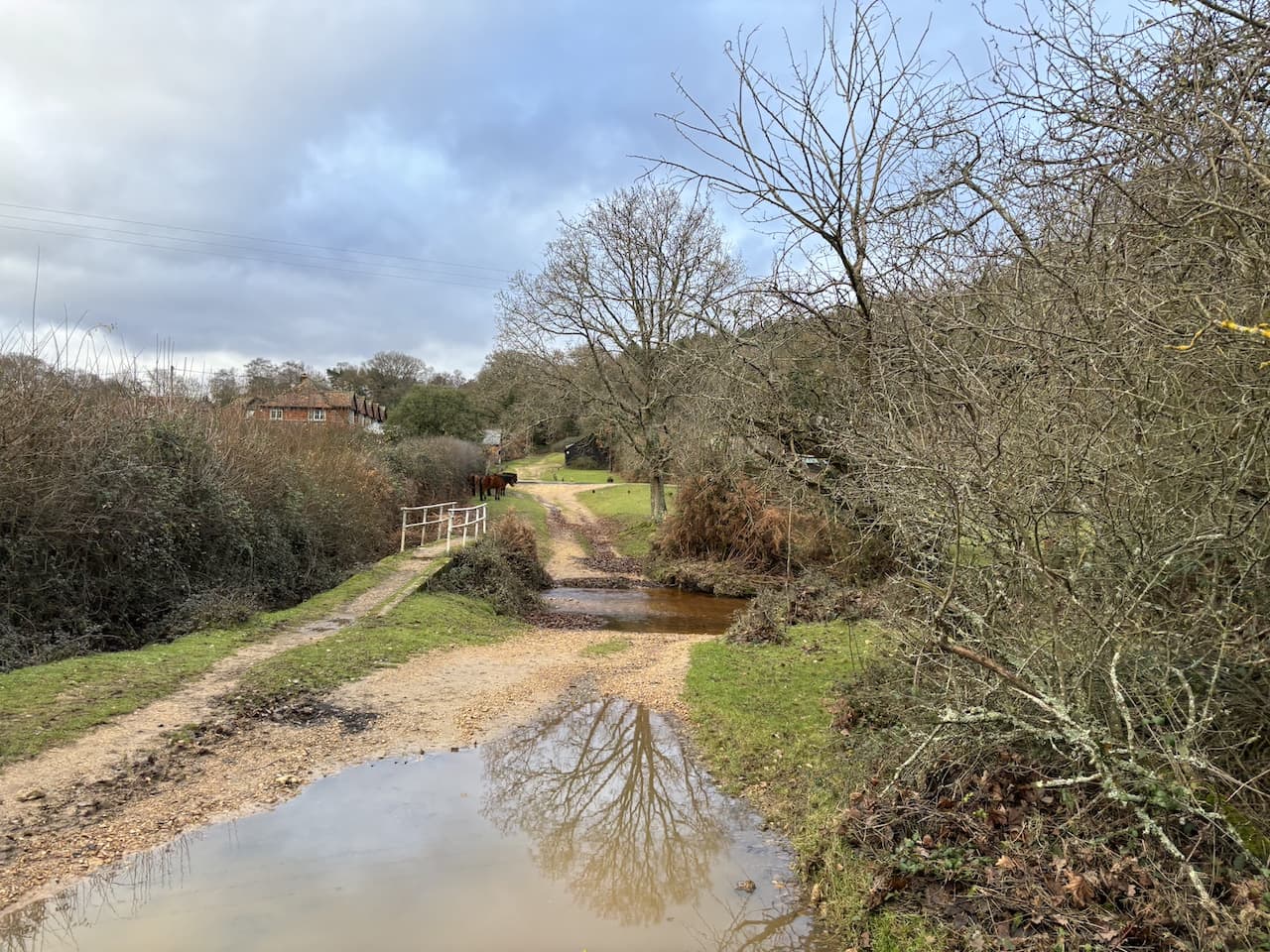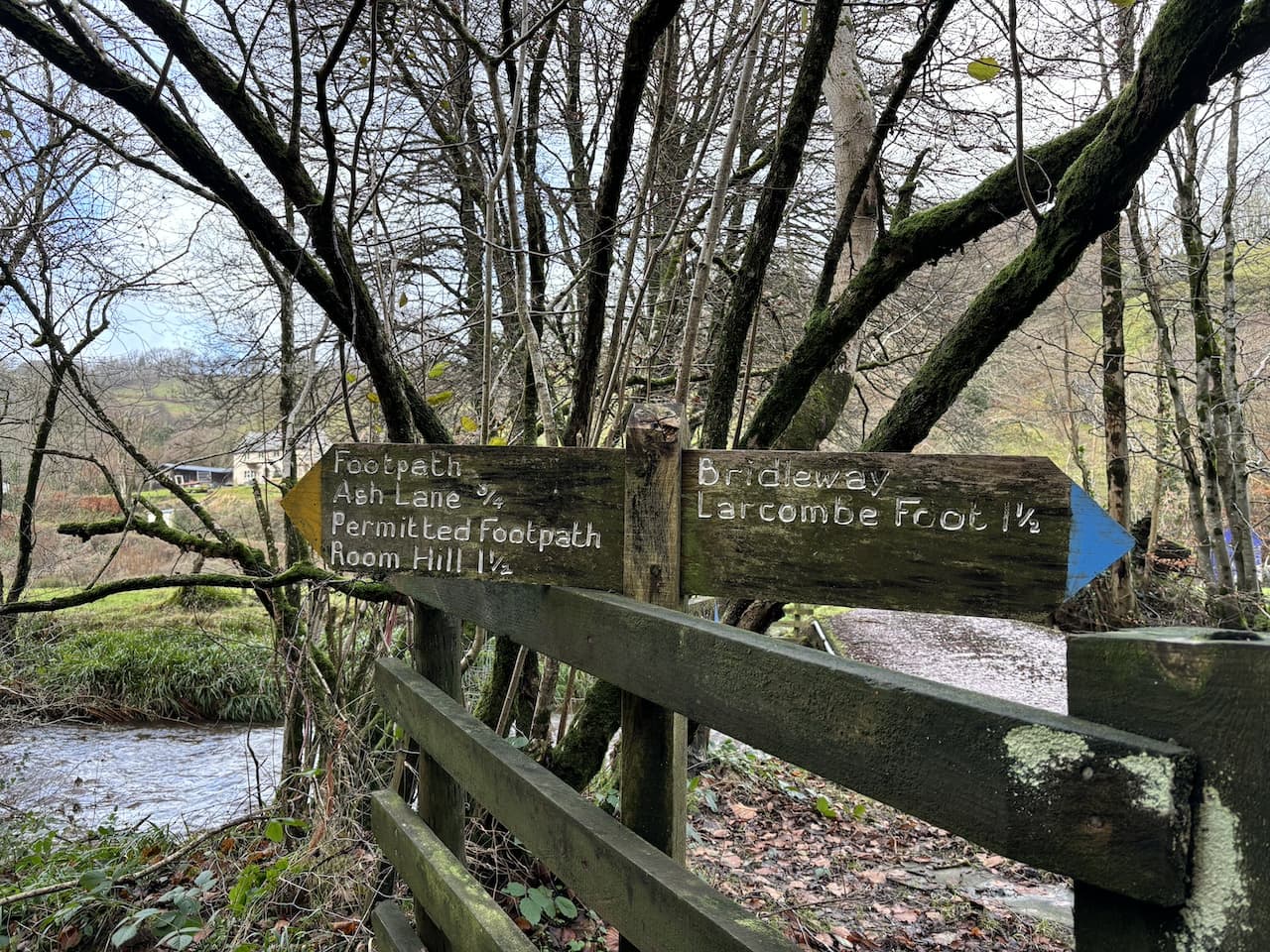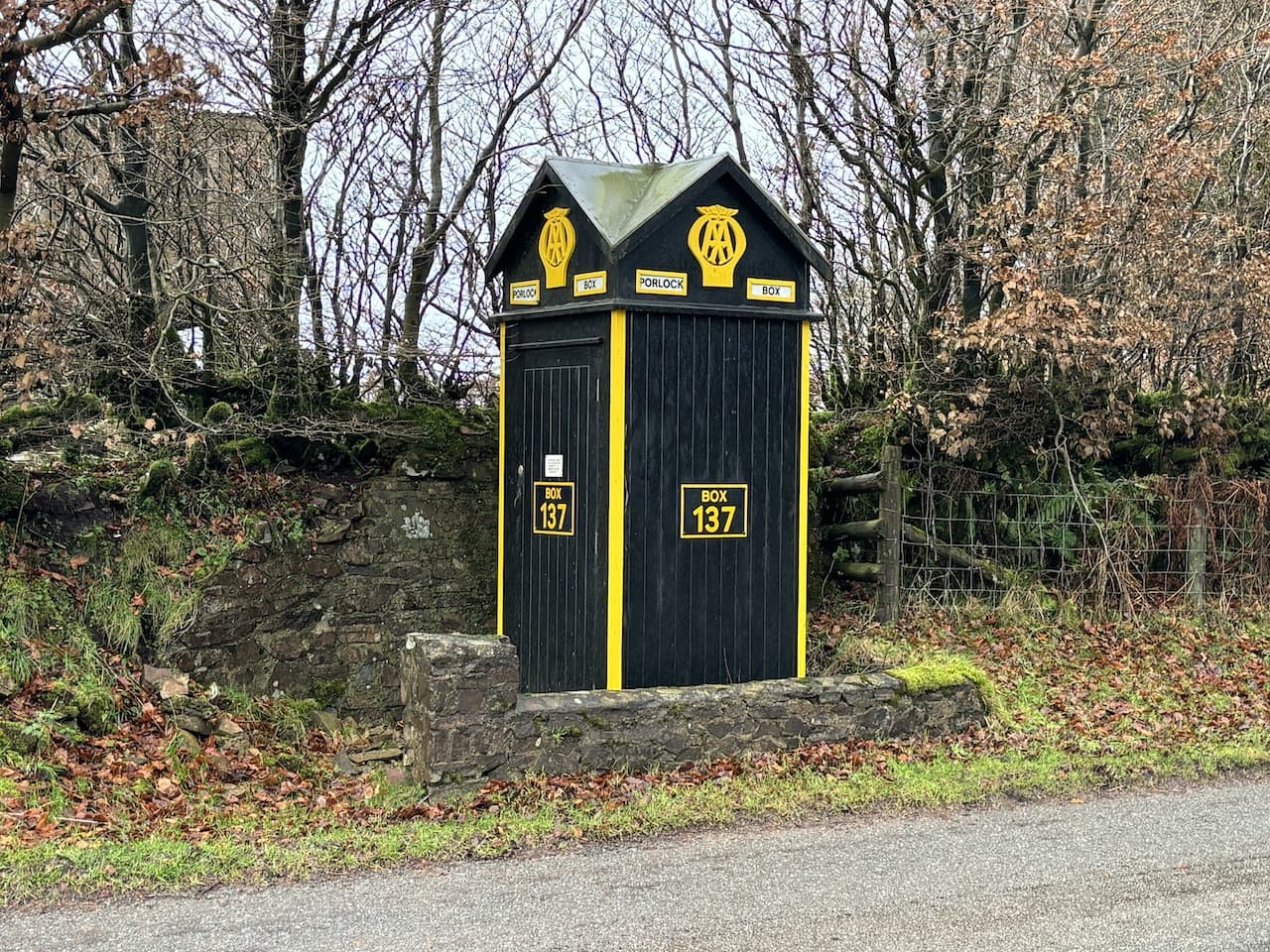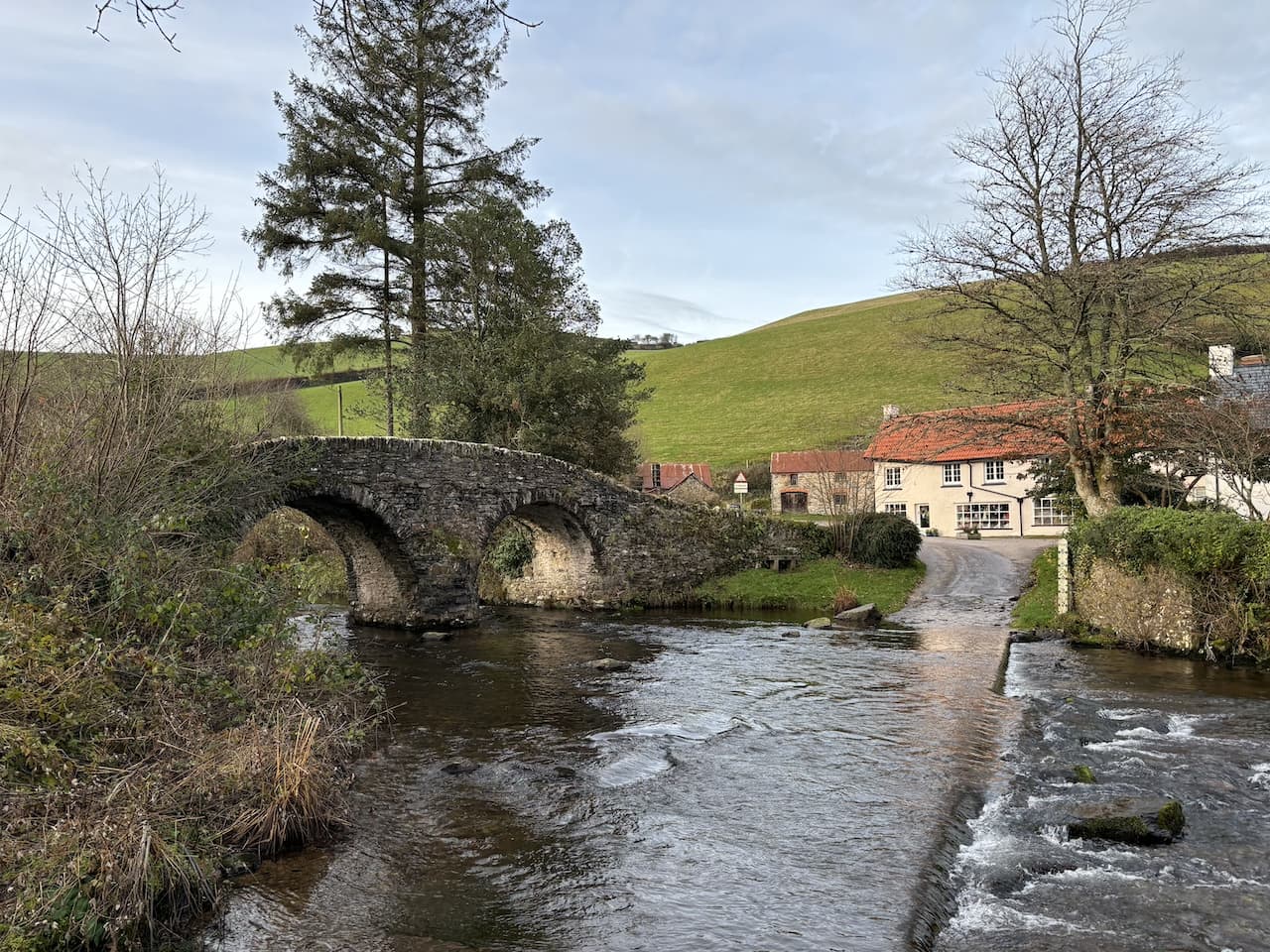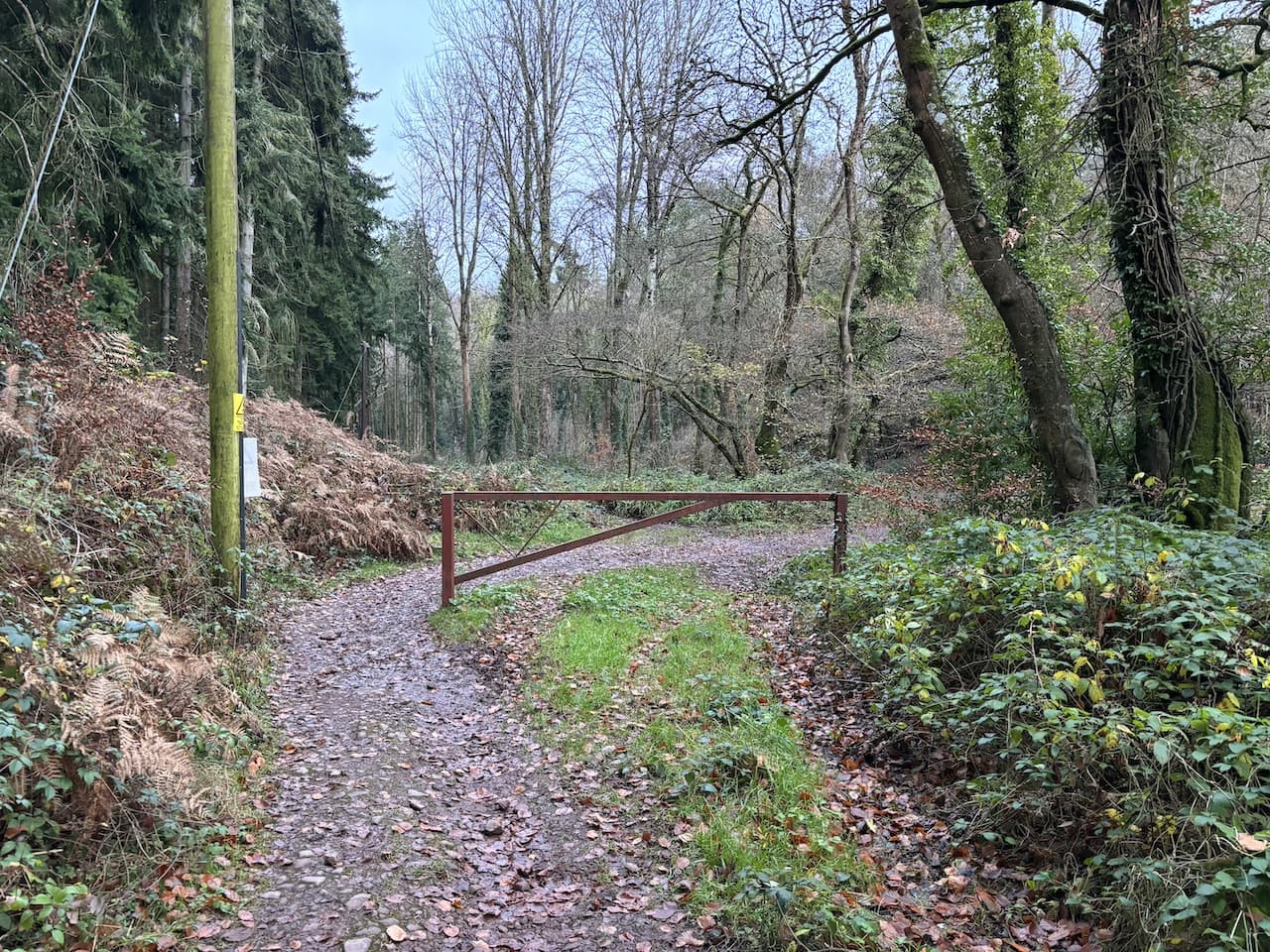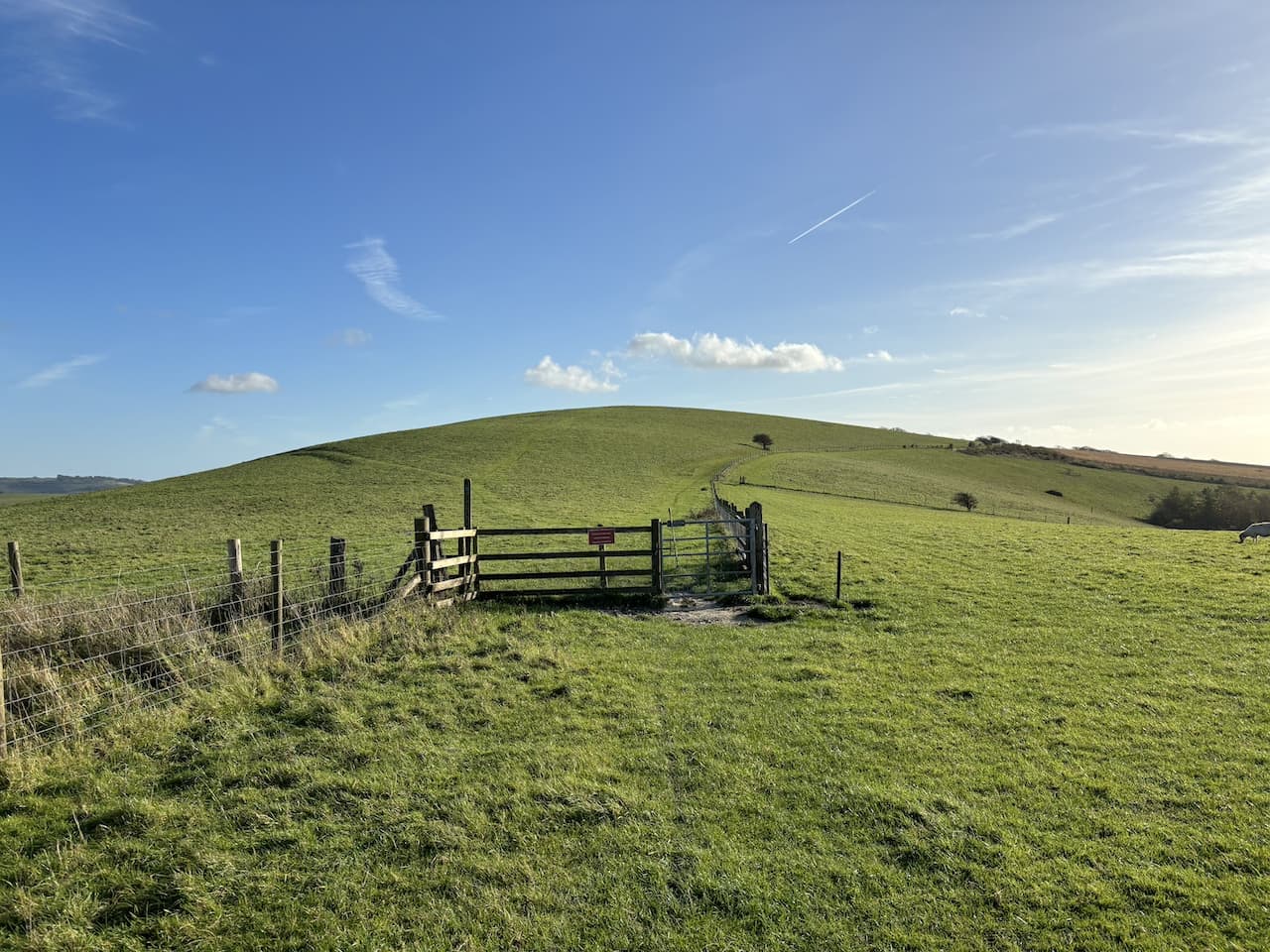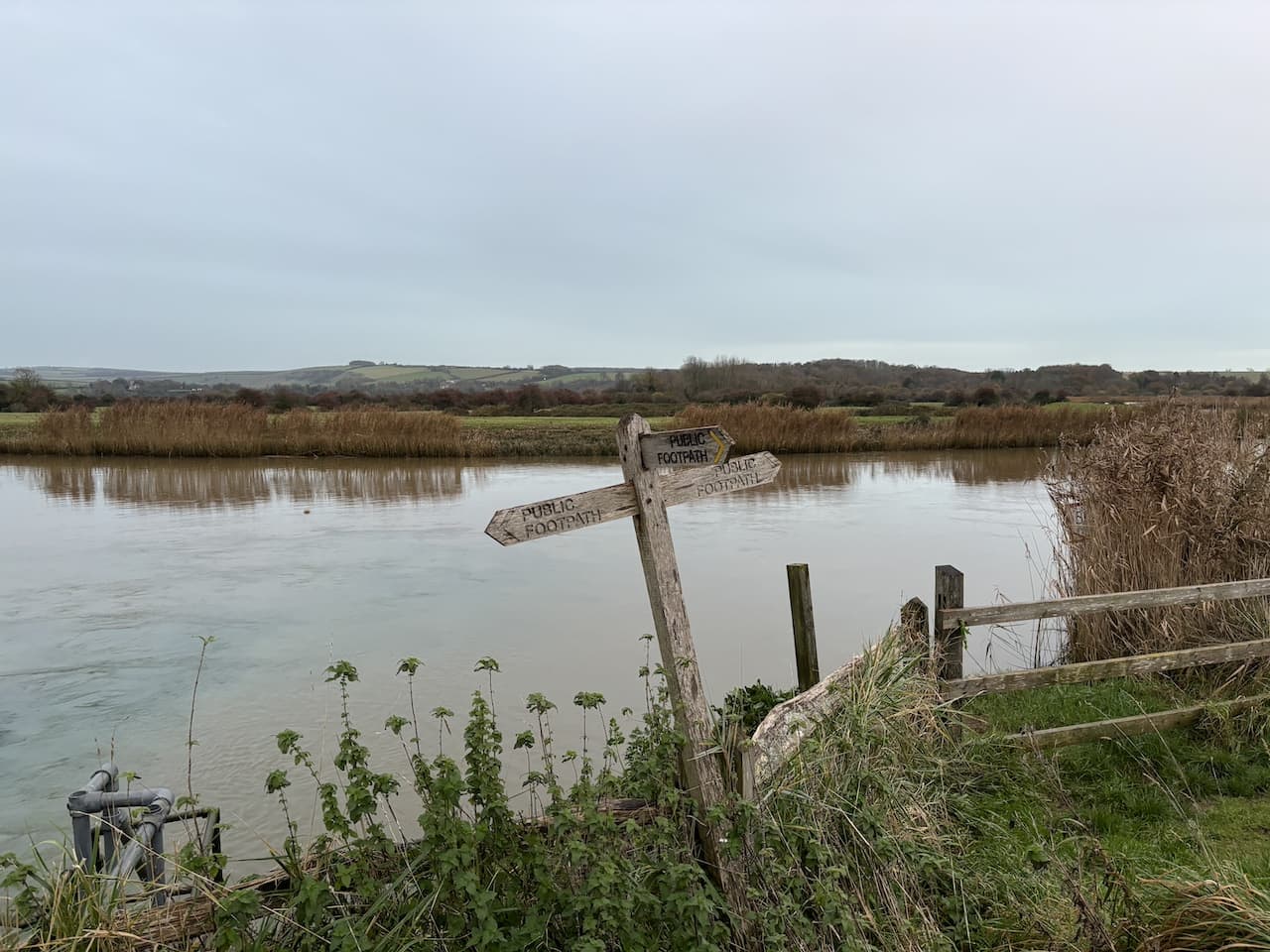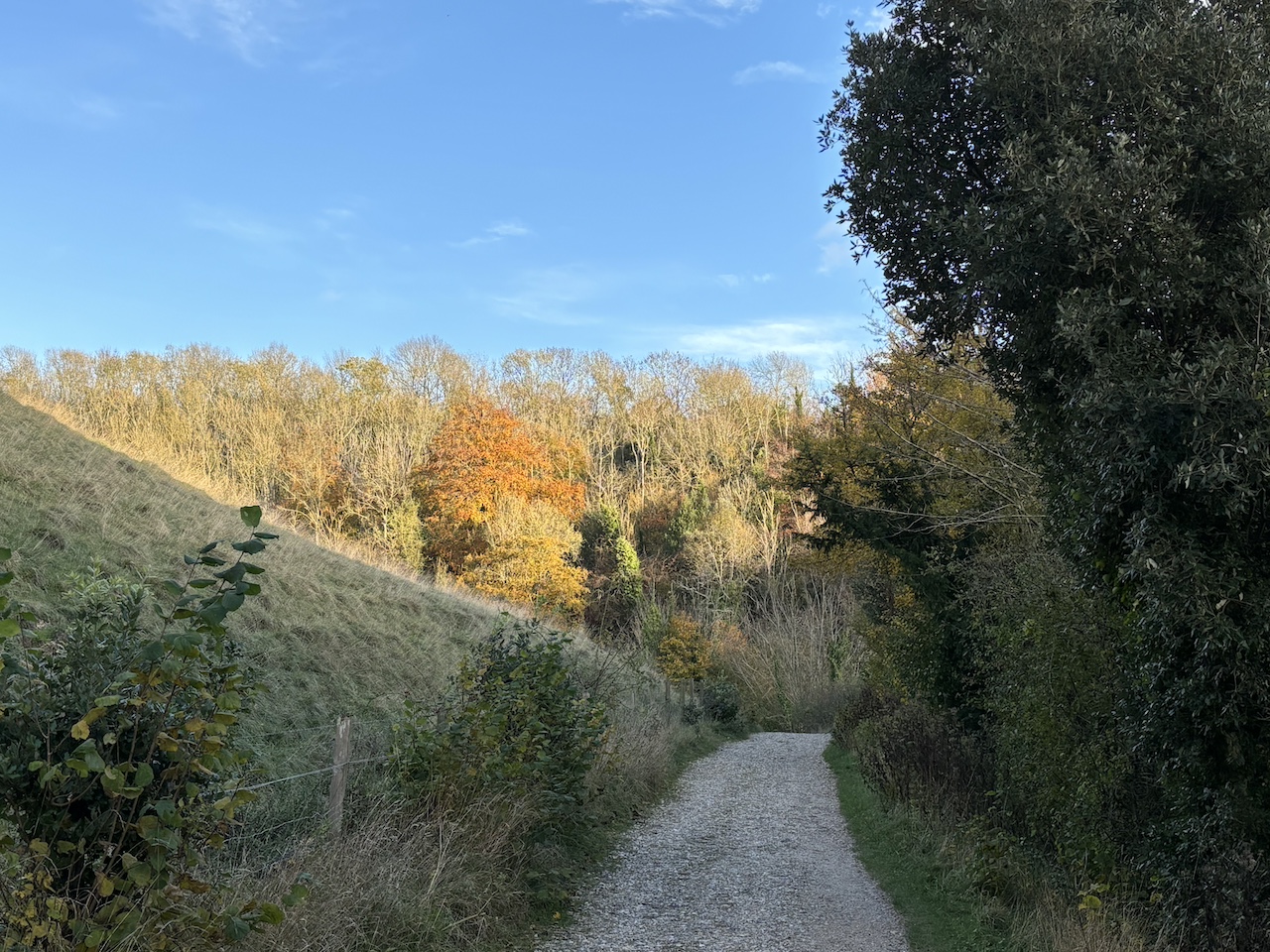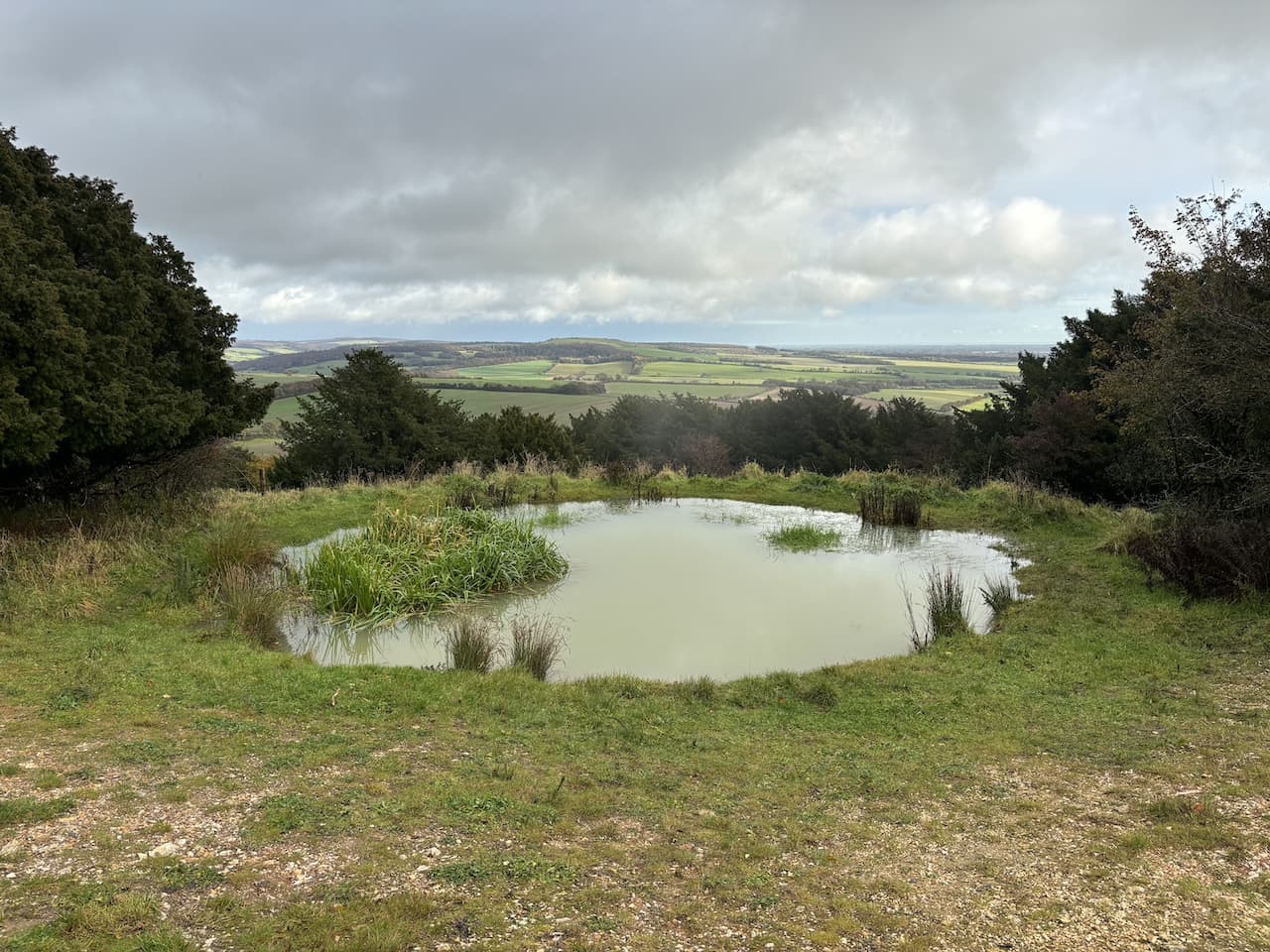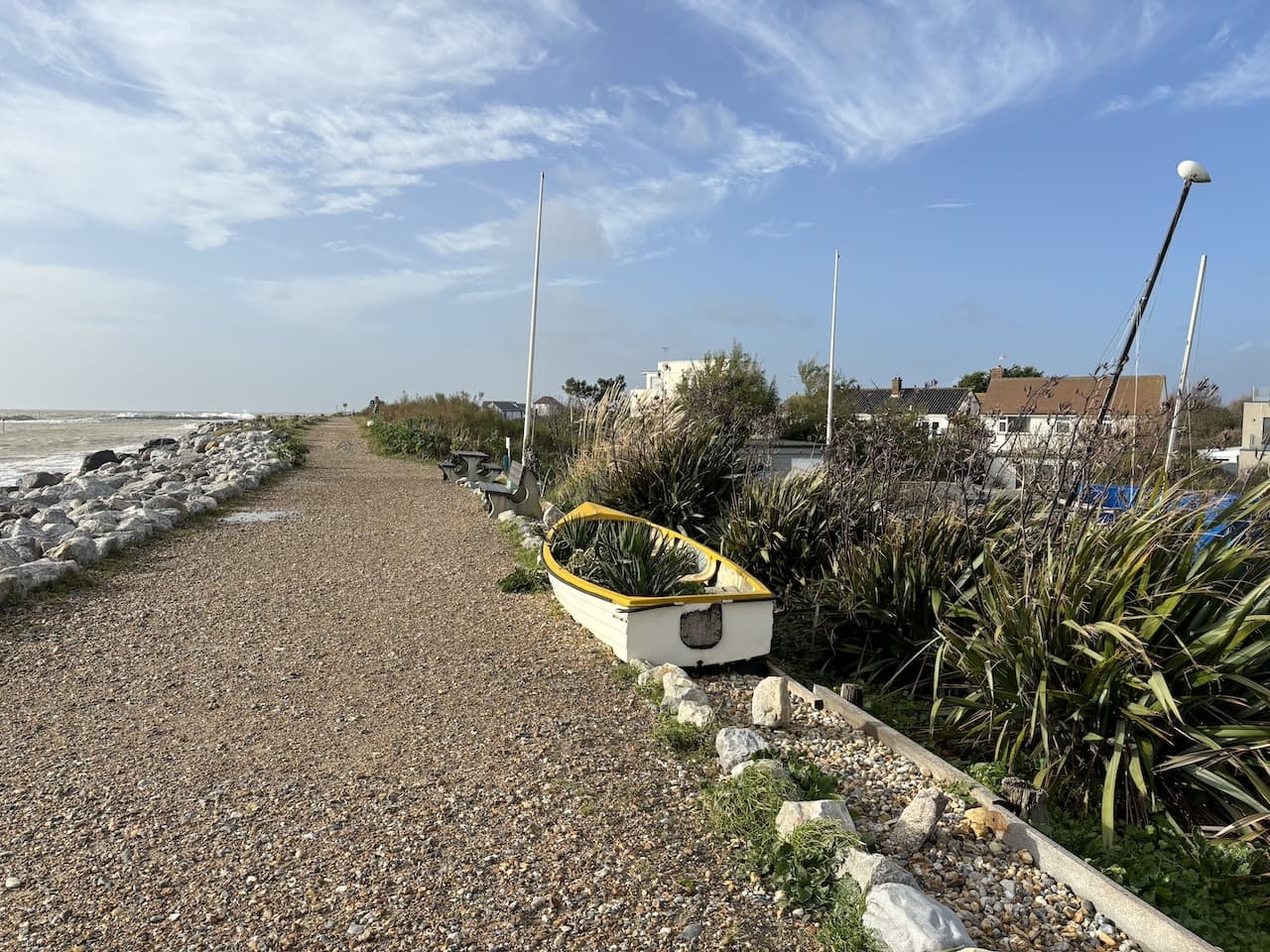After my week away in Minehead I am back home and making the short trip into the New Forest today for a walk with my walking buddies Gary and Nigel. After a prolonged spell of wet weather we know parts of the New Forest will be waterlogged so have planned a route keeping mainly on tracks. The starting point for our walk is the car park in Fritham which is close to the Royal Oak pub. (Grid Ref SU231141).
We leave the car park and head towards the minor road we drove in on, but before reaching the road we turn left and join a track which has a sign saying it is the cycle route to Frogham only.

This track heads west through Gorley Bushes.

After almost half a mile the path descends and passes a more open area and at a junction of tracks we keep to the left to continue heading west on the route of the cycleway.

There are a network of tracks in this area of woodland. We stay on the cycleway as it sweeps to the north west and then at a junction of tracks take the path on the right going north.

We cross the next junction of tracks and at the next track crossing turn left. We are now walking in a section of Island Thorns Inclosure, apparently the oak trees in this inclosure were planted closely together and as a result have grown unusually tall. In recent times woodland management has resulted in the thinning of the oaks with many now piled ?? beside the track.

This track takes us out of the woods and at a junction of tracks on Coopers Hill we turn right. Despite being high up the heathland around the track is very waterlogged.

During World War II this remote area of the New Forest was used as an RAF bombing range and the heathland is still littered with bomb craters.

Reaching a path on the left we leave the track and follow the path for a couple of hundred yards to meet another track where we turn left again and head south west towards a large clearing in the heathland. This clearing is the site of “Walled Target 2” one of three walled targets in the area.

On the ground there is the odd glimpse indicating wartime history, later a look at aerial maps of the area show clearly the scars left on the landscape. We follow a path through the heathland, still heading south west towards a track on Lodge Hill.

At the track we turn left and soon start descending towards a clearing.

The clearing in this area between Lodge Hill and Pitts Wood was the site of a former keepers cottage known as Ashley Lodge. During World War II when the surrounding area became a bombing range the inhabitants were relocated. The house soon became derelict and reduced to ruins, however eighty years later there are still indications that a house once stood on this spot.

Continuing along the track we cross a ford in Ashley Bottom and then head uphill to Pitts Wood.

On our left is a plaque stating that Pitts Wood was enclosed in 1775 and thrown out in 1816 and then re-enclosed in 1906.

We carry on through the edge of Pitts Wood before traversing across the flooded heathland towards Hampton Ridge.

Now high up we have wide ranging views across the New Forest.

We have joined a cycleway and follow this heading west. After a couple of hundred yards we take a short detour from our route, following a path on the left running almost parallel to the cycleway. It passes a concrete directional arrow which formed part of the war time bombing range.

We follow the path to rejoin the Hampton Ridge and then pass the Ordnance Survey Trig Pillar that sits on this ridge. I have bagged this trig on a few occasions, but it is always worth making a slight diversion to look at a trig!

Returning to the cycleway we keep on the broad gravel track towards Abbots Well and Frogham.

The cycle way joins a minor road and we continue towards Frogham, before heading uphill we pass the Abbotts Well. This inauspicious site is easy to miss but in medieval times it would have been a vital watering hole for travellers through this area of the forest as they headed towards Southampton. The plaque besides the well states it was first recorded in 1215.

After a short section on the minor road we turn left and walk through Abbots Well car park and pass a large pond before heading west onto Hyde Common.

After passing properties the path goes towards the south west, crossing a minor road and continuing to the edge of Gorley Common. Here we quickly take a track on the left leading towards Dorridge Hill.

After crossing a footbridge beside a ford we go over a minor road and then continue to ascend Dorridge Hill. So far the weather has been kind to us and it has remained dry but the sky ahead suggests we might get wet at some point soon.

We now follow tracks and paths towards Hasley Inclosure.

We don’t enter the inclosure but instead take a track to the right that skirts the edge of the woodland.

At the eastern edge of the inclosure we join a track going towards Sloden Inclosure but after a couple hundred yards at a junction of tracks turn right to head downhill towards Splash Bridge.

Splash Bridge takes us over Dockens Water and into Broomy Inclosure.

In the Inclosure we turn to the left and follow a cycleway to a crossroads of tracks where we go left again.

On leaving the woods the track goes to the right passing Holly Hatch Cottage and we cross Dockens Water again.

The track now heads up to Ragged Boys Hill and passes woodland beside Sloden Inclosure.

Near a gate to the inclosure we join a track and head northeast across Hiscocks Hill on a track returning us to our starting point.

Our walk has covered just over thirteen miles and despite the threatening sky we have avoided any serious rain.
You can view this 13 mile walk on OS Maps and download the GPX File Here
To follow this walk you will need Ordnance Survey OS Explorer Map 22 – New Forest
13th December 2023
© Two Dogs and an Awning (2023)
All information on this site is provided free of charge and in good faith and no liability is accepted in respect of damage, loss or injury which might result from it. To the best of my knowledge the routes are entirely on public rights of way or within areas that are open for public access.
Walking can be hazardous and is done entirely at your own risk. It is your responsibility to check your route and navigate using a map and compass.
